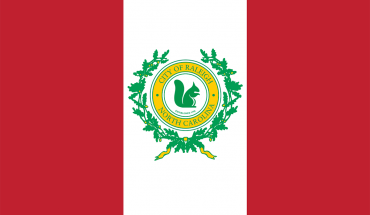STEEL CRAZY
After all these years
Wally Tatomir fine-tunes NHL skates
by Rebecca Guenard
photographs by Christer Berg
Former Carolina Hurricanes equipment manager Wally Tatomir knows it takes more than mettle to win the Stanley Cup; it takes steel. He has been obsessed with hockey blades for decades, and though his formal schooling ended in seventh grade, he owns multiple patents for machines that hone the metal to optimize the physics between steel and ice.
Tatomir may have retired from the Canes in 2012, but his career is as busy as ever. He updates his patented machines regularly with new technology, manages the manufacture of blades at a steel plant in Pennsylvania based on a composition he formulated, and prepares nearly 200 sets of blades to the specifications of star NHL players across the league each season. He does it all from the garage of his Raleigh home.
It’s a long way from the small farming town of Leamington, Ontario, where Tatomir grew up. “The first time my mom bought a pair of skates for me they were girl’s skates,” says Tatomir. The used $3 pair were all she could afford. He spent as much time as he could on them, practicing all day on the frozen pond near his house, then walking home in them at night, sparks flying from the pavement.
“The first time I laced up a pair of skates I had my sights set on playing in the NHL,” says Tatomir. “That was my dream. That’s all I wanted to do.”
By the time he was in seventh grade, his family could finally afford for him to play hockey. The following year he failed the eighth grade, and never returned to school again. “I just kept playing hockey, kept getting better.” In 1961, at the age of 16, he started playing semi-professional hockey. At the time, the NHL only had six teams, and Tatomir says he just wasn’t good enough to play for any of them. So he adjusted his dream, took a job with Chrysler, and played senior hockey on the side for the next 12 years.
One day, he complained to the skate sharpener at his arena, a man named Don Towle. “I go to him and say, ‘Don, why do I turn to the left and I fall down, but I turn to the right I’m ok?’ ” Toll insisted that the problem was with Tatomir’s skating. “So next time he sharpens my skates, I turn to the left I’m good, I turn to the right I’m no good.” Tatomir wanted to understand what was going on, so he asked Toll to teach him about sharpening skates.
He approached skate-sharpening with the same tenacity he brought to hockey. “I came in there every day when I had time. I’d come in and he would teach me and I’d help him out. I’d do it for nothing, because I wanted to learn. That’s how it all started,” says Tatomir.
Precision craft
Hockey is a sport of rapid accelerations, tight turns, precise stops, and constant sprints. Players need the agility of a figure skater and the velocity of a speed skater. To accomplish this, Tatomir will tell you, the length of metal on the bottom of a skate, a little more than a foot long, must be crafted with as much artistry as a medieval sword.
On a crepe myrtle lined Raleigh street, in the biggest bay of his three-car garage, Tatomir has arranged a tidy shop with dozens of machines he developed for blade-smithing. He calls his honing techniques “his system,” a way of preparing each section of a runner according to its use.
To propel themselves, hockey players push off the front third of their blade; to blaze down the ice at top speed, they use the center third; to cut a tight turn, they tip onto the back third. Tatomir adds a flat spot near the center of the curved blade to improve speed, but he can only take about three inches to do it (a speed skater, who doesn’t need to maneuver, pivot, or stop, gets to use the full 21 inches of metal). Tatomir also performs a standard sharpening, forming what’s called a hollow. It might be standard, but it takes a careful hand to take a blade that’s only about as wide as the rim of a coffee mug and grind away half of it, leaving two micro-thin knife edges. Like a catamaran that slices through water more efficiently than a single-hulled vessel, these blades are made for speed.
At ProSharp Skate Services, the pro shop he co-owns at Raleigh
IcePlex, Tatomir is equally careful. All blade sets have to be sharpened the same way, within a quarter of a thousandth of an inch: That’s a single strand of hair, split eight times. There is no excuse for a young hockey player to suffer an injury from a bad sharpening, Tatomir says.
Chasing a dream
When Peter Karmanos bought the Hartford Whalers in 1994, Tatomir – who had previously worked for Karmanos part-time, repairing equipment for a junior team in Ontario – jumped at the chance to work for the NHL, quit his day job at Chrysler, and moved to Connecticut. Three years later, the team, and Tatomir, found themselves in Raleigh.
By the time the Hurricanes got to the Stanley Cup finals in 2002, Tatomir had adjusted all his sharpening machines and perfected his system. “That year we only had 13 or 14 guys using my system,” he says. “But I knew I had something because guys were loving it. Guys felt better.”
There was only one problem: The blades he worked so hard to sharpen were regularly breaking. Tatomir decided the composition of the metal was to blame. “I started hitting the books,” he says. When he was satisfied that he had taught himself the optimum composition of a hockey blade, he contracted a steel company outside of Scranton, Pennsylvania to make the steel for him. “I knew nothing about steel. Now you ask me about steel; I’ll tell you about steel.”
Not every equipment manager believes that all this obsessing over skate blades has an impact on the game. But Tatomir says it’s a lot like balancing the tires on your car. You can usually get around fine without balancing your tires, but there’s less wear on your engine if you do it. Similarly, fine-tuned runners can boost player endurance, because less effort is required of their leg muscles.
In 2006, when the Hurricanes won the Stanley Cup, Tatomir had all 26 of the team’s rostered players on his system. To this day, he can recall the sharpening specifics for each player’s skates. Did it help them win the Cup? Tatomir won’t speculate.
The question of what makes a championship team is an important one, particularly with the future of the Hurricanes in question. In recent months, several news outlets have reported that Peter Karmanos is considering a $500 million offer to sell the Hurricanes to Chuck Greenberg, former CEO of the Texas Rangers. Greenberg has visited PNC Arena a few times over the past year, but as of press time, nothing has been made official. In the meantime, the team continues to build its talent in preparation for the 2017-18 season. It picked up goalie Scott Darling, extended defenseman Jaccob Slavin’s contract by seven years, and brought back Justin Williams, a veteran of the 2006 Stanley Cup team. Preseason evaluations of the team indicate that they are set for a better showing this season, and Canes fans are anxious to see their team make the playoffs again.
Tatomir is of course among them. Old habits die hard. He still goes to every game. From his seat he can see when someone’s off balance, and he says it drives him crazy. In January, he bought half of the IcePlex pro shop to try and channel that energy.
He’s as careful with youth skates as he is the pros’, he says, because he’s dedicated to keeping youth skaters safe. Years ago, his expertise was called on as an expert witness in a case in Windsor, Ontario in which a child slid headfirst into the boards and became quadriplegic because his skates were dramatically out of alignment. Tatomir eventually testified for 32 hours, but initially the attorneys tried to discredit him by asking what degree he had. Grade seven, he replied.
“For not going to school, I sure learned a lot along the way.”







